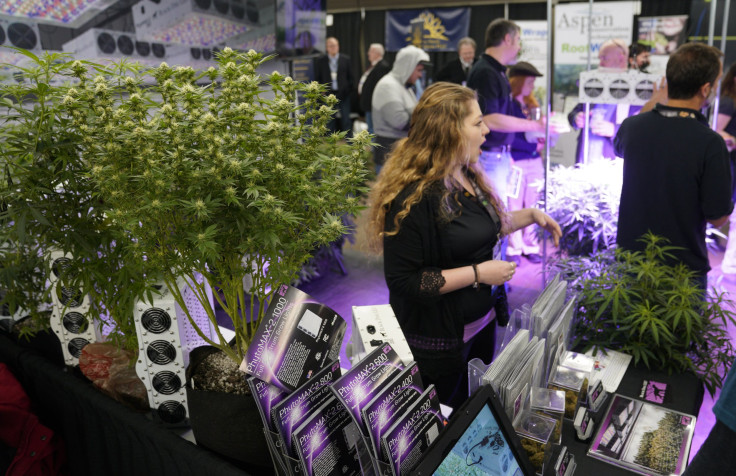US Participation In $31 Billion Cannabis Industry Restricted By Federal Laws

Before long, the United States may be surrounded by legal recreational cannabis. Canada has already created a multi-billion dollar industry through federal legalization in 2018; now, Mexico is looking to join Canada with federal legalization. Overall, thirty countries, from Argentina to Zimbabwe , allow at least some degree of medical marijuana use at the national level.
With so much cannabis activity, the global market is expected to hit $31 billion by 2021.
In spite of the growing global legalization movement, including a majority of U.S. states legalizing some form of cannabis use, the federal government continues to cling to prohibition. In doing so, the U.S. has ceded its economic — and moral — leadership in the cannabis market, and the delays will have repercussions for years to come.
As the founder and CEO an adaptive healthcare solutions company developing cannabinoid-based medicines, I have an intimate appreciation for the effects of federal prohibition. Unable to carry out research into cannabis-derived pharmaceuticals for diabetics in the U.S., we were forced to relocate our first production center to the Republic of Vanuatu in the South Pacific.
Impact of current federal marijuana policies
In short, federal prohibition is driving cannabis companies, medical researchers, and investors away from the U.S.
Under current federal law, almost any marijuana production, sale, or use is illegal. In December, the government finally recognized the difference between marijuana and hemp, which for decades were both classified as Schedule 1 drugs, as dangerous as heroin. The 2018 Farm Bill legalized industrial hemp cultivation, since hemp contains almost no THC, the psychoactive component of marijuana that gets you “high.”
However, this “win” was tempered when the FDA announced it would restrict legal uses of CBD, a popular hemp-derived product for therapeutic and medicinal purposes. Furthermore, the last few years of federal policies have undone any progress towards cannabis legalization at the national level. The DEA denied two petitions to reclassify marijuana and allow for medical use nationwide. In 2018, the Cole Memo pushed marijuana policy forward by stating the federal government would mostly leave marijuana prohibition up to states to enforce.
These policies penalize patients who turn to marijuana as a natural way to manage the symptoms of cancer, diabetes , and opioid use disorder by criminalizing them . Making federal prohibition both an economic and health issue.
Research from New Frontier Data last year found that nationwide legalization would create $132 billion in tax revenue and a million new jobs over the next decade. Under current federal law, the federal government gets nothing from today’s cannabis sales, and instead spends billions per year to enforce outdated and racist drug laws.
Prohibition is disingenuous (at best)
In the 1990s, two paths emerged for the U.S. with regards to marijuana. On the one hand, California passed Proposition 215 , legalizing medical marijuana for the first time in the country. On the other hand, a nationwide crackdown on drugs doubled the number of marijuana arrests in the U.S. from 1990-2002 (327,000 to 697,000).
The federal government has largely maintained its irresponsible mentality towards cannabis. The cost, from my perspective, has been the long-term abdication of the U.S. as the center of cannabis research.
Since the 1960s, scientist Ralph Mechoulam, known as the “ father of marijuana ” has been performing groundbreaking medical research on the uses of cannabis. Israel has long been a center of cannabis discoveries, and now Canada is beginning to do its part . The U.S., though, has largely been left out of this progress. There is little federally-supported scientific research into cannabis. And, in the private sector, the inability for cannabis-related companies to use banks or get loans has further stifled innovation.
All of this, in spite of the fact that the U.S. government recognizes the potential benefits of cannabis. In 2003, the Department of Health and Human Services was granted U.S. Patent No 6,630,507, which covers the potential use of non-psychoactive cannabinoids (i.e., the CBD products recently addressed by the FDA). While the U.S. government is not a single entity, the fact that the DEA and the Justice Department maintain that cannabis has “no currently accepted medical use and a high potential for abuse” looks increasingly disingenuous as more countries legalize.
If legalization were to happen in the U.S., and much of Europe and Latin America, the global cannabis market could grow to $130 billion by 2029. But this price tag pales in comparison to potential good that can come from medical research into cannabis use. At a time when the average American spends more on health care than any other developed country, patients shouldn’t also have to pay the price of prohibition.
Martin Tindall is CEO of Phoenix Life Sciences International, an international adaptive healthcare solutions company.
© Copyright IBTimes 2024. All rights reserved.











